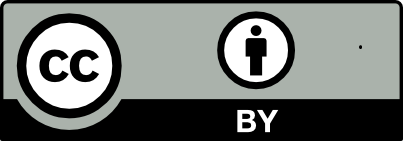Detection of the ability of cyanobacterial Chroococcidiopsis cubana isolated from the Shatt al-arab River in southern Iraq to produce hepatotoxins MCs
DOI:
https://doi.org/10.56714/bjrs.50.1.28Keywords:
Chroococcidiopsis, HPLC, Shatt al-Arab, microcystins, cyanobacteriaAbstract
The study involved the isolation, purification and culturing of the cyanobacterial Chroococcidiopsis cubana from the Shatt al-Arab River in the Basrah Governorate, southern Iraq. The growth curve of Ch. cubana was schemed after its cultivation in the liquid culture medium BG-11. The growth analysis indicated a growth constant (k) = 1.3 and a generation time (G) = 0.5 days. Ch. cubana ability to produce hepatoxic microcystins (MCs) was detected after isolating and purifying the toxins. The toxins were determined quantitatively and qualitatively using the technique of High-Performance Liquid Chromatography (HPLC), which revealed that Ch. cubana exhibited a high production capacity of these toxins, with a concentration rate = 4.053 ug/l.
Downloads
References
[1] R. B. Dixit, A. K. Patel, K. Toppo, and S. Nayaka, "Emergence of toxic cyanobacterial species in the Ganga River, India, due to excessive nutrient loading," Ecological Indicators, vol. 72, pp. 420-427, 2017.
Doi: https://doi.org/10.1016/j.ecolind.2016.08.038
E. Siddiqui and J. Pandey, "Temporal and spatial variations in carbon and nutrient loads, ion chemistry and trophic status of the Ganga River: a watershed-scale study," Limnology, vol. 20, no. 3, pp. 255-266, 2019.
Doi: https://doi.org/10.1007/s10201-019-00575-1
P. Kumar, A. Rautela, V. Kesari, D. Szlag, J. Westrick, and S. Kumar, "Recent developments in the methods of quantitative analysis of microcystins," Journal of Biochemical and Molecular Toxicology, vol. 34, no. 12, p. e22582, 2020.
Doi: https://doi.org/10.1002/jbt.22582
I. Y. Massey et al., "A mini-review on detection methods of microcystins," Toxins, vol. 12, no. 10, p. 641, 2020.
Doi: https://doi.org/10.3390/toxins12100641
D. Blagojević et al., "Evaluation of cyanobacterial toxicity using different biotests and protein phosphatase inhibition assay," Environmental Science and Pollution Research, vol. 28, no. 35, pp. 49220-49231, 2021.
Doi: https://doi.org/10.1007/s11356-021-14110-2
B. R. Cunningham et al., "Measurement of Microcystin Activity in Human Plasma Using Immunocapture and Protein Phosphatase Inhibition Assay," Toxins, vol. 14, no. 11, p. 813, 2022.
Doi: https://doi.org/10.3390/toxins14110813
I. Mrdjen, J. Lee, C. M. Weghorst, and T. J. Knobloch, "Impact of cyanotoxin ingestion on liver cancer development using an at-risk two-staged model of mouse hepatocarcinogenesis," Toxins, vol. 14, no. 7, p. 484, 2022.
Doi: https://doi.org/10.3390/toxins14070484
W. W. Carmichael, "The toxins of cyanobacteria," Scientific American, vol. 270, no. 1, pp. 78-86, 1994.
Doi: https://www.jstor.org/stable/24942554
Y. Xu, J. Cui, H. Yu, and W. Zong, "Insight into the molecular mechanism for the discrepant inhibition of microcystins (MCLR, LA, LF, LW, LY) on protein phosphatase 2A," Toxins, vol. 14, no. 6, p. 390, 2022.
Doi: https://doi.org/10.3390/toxins14060390
N. D. Wagner et al., "Biological stoichiometry regulates toxin production in Microcystis aeruginosa (UTEX 2385)," Toxins, vol. 11, no. 10, p. 601, 2019.
Doi: https://doi.org/10.3390/toxins11100601
M. K. Cordeiro‑Araújo, A. S. Lorenzi, M. A. Chia, E. C. Mota, and M. do Carmo Bittencourt-Oliveira, "Insights into the impact of increasing temperature, light intensity, and UV-B exposure on the circadian rhythm of microcystin production and release, and the expression of mcy genes in the cyanobacterium Microcystis aeruginosa," Journal of Applied Phycology, pp. 1-12, 2022.
Doi: https://doi.org/10.1007/s10811-021-02635-5
C. J. Gobler et al., "The dual role of nitrogen supply in controlling the growth and toxicity of cyanobacterial blooms," Harmful Algae, vol. 54, pp. 87-97, 2016.
Doi: https://doi.org/10.1016/j.hal.2016.01.010
Q. Chen et al., "Physiological effects of nitrate, ammonium, and urea on the growth and microcystins contamination of Microcystis aeruginosa: Implication for nitrogen mitigation," Water research, vol. 163, p. 114890, 2019.
Doi: https://doi.org/10.1016/j.watres.2019.114890
J. Huisman, G. A. Codd, H. W. Paerl, B. W. Ibelings, J. M. Verspagen, and P. M. Visser, "Cyanobacterial blooms," Nature Reviews Microbiology, vol. 16, no. 8, pp. 471-483, 2018.
Doi: https://doi.org/10.1038/s41579-018-0040-1
A. R. Brown et al., "Assessing risks and mitigating impacts of harmful algal blooms on mariculture and marine fisheries," Reviews in Aquaculture, vol. 12, no. 3, pp. 1663-1688, 2020.
Doi: https://doi.org/10.1111/raq.12403
K. L. Reinl et al., "Cyanobacterial blooms in oligotrophic lakes: Shifting the high-nutrient paradigm," Freshwater Biology, vol. 66, no. 9, pp. 1846-1859, 2021.
Doi: https://doi.org/10.1016/B978-0-323-95527-0.00015-4
J. Wei et al., "Simultaneous Microcystis algicidal and microcystin synthesis inhibition by a red pigment prodigiosin," Environmental pollution, vol. 256, p. 113444, 2020.
Doi: https://doi.org/10.1016/j.envpol.2019.113444
J. R. Stein-Taylor, Handbook of Phycological Methods: Culture methods and growth measurements, edited by JR Stein. Cambridge University Press, 1973.
V. E. Wiedeman, P. L. Walne, and F. R. Trainor, "A new technique for obtaining axenic cultures of algae," Canadian journal of botany, vol. 42, no. 7, pp. 958-959, 1964.
Doi: https://doi.org/10.1139/b64-085
R. Luukkainen, K. Sivonen, M. Namikoshi, M. Färdig, K. Rinehart, and S. Niemelä, "Isolation and identification of eight microcystins from thirteen Oscillatoria agardhii strains and structure of a new microcystin," Applied and Environmental Microbiology, vol. 59, no. 7, pp. 2204-2209, 1993.
Doi: https://doi.org/10.1128/aem.59.7.2204-2209.1993
M. Namikoshi, B. W. Choi, F. Sun, K. L. Rinehart, W. R. Evans, and W. W. Carmichael, "Chemical characterization and toxicity of dihydro derivatives of nodularin and microcystin-LR, potent cyanobacterial cyclic peptide hepatotoxins," Chemical research in toxicology, vol. 6, no. 2, pp. 151-158, 1993.
Doi: https://doi.org/10.1021/tx00032a003
M. Aubaeed, "Capability of some blue-green algae isolated from some water bodies in Basra governorate/southern of Iraq to production of toxins," Thesis. College of Education for Pure Sciences. University of Basrah, 2017.
D. Magana-Arachchi, L. Jayasinghe, and R. Wanigatunge, "Detection of hepatotoxic microcystin in Chroococcidiopsis species," IFS- AFASSA International Conference on Natural Products and their Applications in Health and Agriculture. 3rd- 8th October, PO- 16; P. 98. 2011.
M. Mitreva and V. Gartner, "MICROCYSTIS AERUGINOSA AND M. WESENBERGII: KEY MICROCYSTIN PRODUCERS IN BULGARIAN WATERBODIES," The American Journal of Applied sciences, vol. 5, no. 05, pp. 22-26, 2023.
Doi: https://doi.org/10.37547/tajas/Volume05Issue05-03
W. Wang, Y. Sheng, and M. Jiang, "Physiological and metabolic responses of Microcystis aeruginosa to a salinity gradient," Environmental Science and Pollution Research, pp. 1-12, 2022.

Downloads
Published
Issue
Section
License
Copyright (c) 2024 Basrah Researches Sciences

This work is licensed under a Creative Commons Attribution 4.0 International License.







